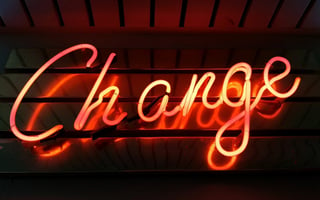In the ever-evolving world of PR, communications, and media, feedback isn’t just a helpful tool -...
Comms professionals thrive on creativity, adaptability and communication.
But for neurodivergent professionals, navigating these demands can be challenging.
According to a recent report, as many as 20 per cent of PR professionals identify as neurodivergent. And 65 per cent of them have reported negative impacts from work.
So, isn’t it time we provided better support and unlocked their potential?
This was the topic of our latest masterclass for members of the Media Team Academy, our learning and development programme for comms, PR and media relations professionals.
Dan Boniface and Darren Draper, from The BCF Group, were joined by Georgina Shute, the founder of KindTwo, a coaching and consulting practice that specialises in neurodivergent leadership.
They began by exploring the meanings of the terms neurodiversity and neurodivergent.
“We use certain words, not just these two, that we don’t fully understand what they mean,” Darren said.
Judy Singer, an Australian sociologist credited with coining the term ‘neurodiversity’, describes it as “The natural variation in human brain wiring and functioning – including autism, ADHD, dyslexia, dyspraxia and more.”
What about neurodivergent?
The Cleveland Clinic says: “Neurodivergent describes people whose brain differences affect how their brain works. That means they have different strengths and challenges from people whose brains don’t have those differences.”
Dan says that while organisations are getting better at diversity and inclusion, “neurodiversity feels like the missing piece”.
Georgina agreed, saying: “I think it can be seen as being invisible or complex.
“It can feel so overwhelming and so big that we don’t know where to start.
“It’s not something that can be fixed with policy.”
Is there a risk we are pigeonholing people with these terms?
“I think sometimes, when the human brain tries to make sense of something, a label can he helpful,” Georgina said.
“People generally do things with good intentions, and if we are trying to understand things like ADHD and autism, a label can be useful.
“But a label isn’t the be-all and end-all of something.
“If you think about learning to ride a bike, you fall off, ask more questions, take the stabilisers off – it’s that kind of journey of understanding.”
KindTwo works with individuals to find tools and systems that help them navigate the world. And with teams and organisations to help everyone “speak the same language”.
Can the help that is put in place for people with neurodivergence also hold them back?
“People generally do things with the best of intentions,” Georgina said.
“We see a challenge, and we try to solve it. And maybe a policy or a working group is the facilitation for that change.
“I think an important tool in the box is understanding yourself.
“I use the Manual of Me, which is essentially a guide to how I like to work.
“If Darren, Dan and I all have Manuals of Me and start working together, it becomes the basis of that conversation – ‘I like to work best in the morning’, ‘I like to work best in the afternoon - ok, how can we make that work?
“It helps form that bond and connection.”
Dating profile
Let’s find out a bit more about a Manual of Me, a framework that was created by Matthew Knight.
It is based on a simple document that lists someone’s preferences and working styles.
“I think of it a bit like a dating profile,” Georgina said.
“On a dating profile, you can have your picture, the things you enjoy doing, maybe the things you don’t enjoy.
“For a Manual or Me, you would have when you work at your best and when you might struggle.
“Once you and your team have written it down, it forms the basis of how you can work better together because we know more about each other.
“Even the exercise of doing a Manual of Me can be helpful for doing some reflection on how you work best.”
What do you do with this manual once it’s in place?
“It’s basically a tool or resource to explain how we best work with each other.
“It can be particularly helpful for long-standing teams. I come from a tech background and work in teams where people have widely different roles and responsibilities.
“What I found with some of my engineering teams is that by being able to express ‘this is the way I best work’, it can he helpful for someone to come back and say, ‘me too’ or ‘I don’t quite work like that’.
“It allows us to meet someone with a level of curiosity and can strip away some of that shame and judgement of ‘you don’t work like I do’ or ‘I’m not sure I want to work with you’.
“We can see such a small window into the worlds of other people that the safer we make the space to share information about themselves, the easier work is.
“And the easier it is to get the stuff done we know we need to do.”
What are some of the barriers neurodivergent people experience at work?
“For me, it can he things like fluctuating focus.
“I can sometimes be seen as lazy or inconsistent. But my rhythm is different to other people, and I try to plan around my energy levels, rather than the hours I am working.
“So, in a 9-5 role, it is crucial for me to take breaks, whether it is a few minutes between meetings or a focused hour break.
“We sometimes find ourselves in these busy places. But the time we can create for ourselves to not work can make work much more productive.
“The other thing I can find challenging is when I go into a meeting with no explanation – let’s say an invite in the calendar for 3pm with nothing in it.
“I need a clear agenda with the things we are doing.
“Written follow-ups are also important, and AI can be great for this. We don’t have to curate the information ourselves anymore, which means we can focus more on the conversation.”
As a comms or PR manager, how should you communicate who you are?
“The Manual of Me is a good starting point,” Georgina said.
“Team resets are helpful for understanding how a team works best. This is our vision. This is what we are here to do. This is how I support it as a leader. And this is how I work best.”
Darren added: “As a leader, if you don’t want others to wear a mask, you must reflect on yourself – that’s the only person you can control.
“You have to think about whether you turn up with a mask each day and are truly yourself? And whether you are sharing your needs and wants.
“If you want that from your team, to get the best from them, you need to be showing it.”
Small steps can be important.
Georgina said: “If you share this information with one person, you are teaching your body that it is safe to have that conversation.
“It doesn’t need to be that after watching this masterclass you go in and tell your whole team you need X, Y and Z – that will feel like a huge step.
“Break it down. Maybe the first step is to express a small need to a friend.”
With ADHD, focus can fluctuate. What can managers and others do to support that?
“People with ADHD can sometimes find it hard to get started on something, which is why I came up with the procrastination framework.
It has four steps.
Dopamine it: Make the thing you are trying to do appealing. Georgina said: “Have a cup of tea. Give yourself a chocolate bar. Give yourself that feeling you are about to do something fun.”
Break it down: Georgina said: “If you’ve got a big project to finish, break it down to, for example, ‘today I need to finish the draft of the presentation and I need to do five slides’.”
Clarify: Does the bit you are doing meet that bigger goal?
Celebrate: Celebrate the progress you are making towards your goal. “Reward progress, not perfection,” Georgina said.
How should we talk about neurodiversity?
If you are a comms manager and think someone in your team is showing signs of ADHD, how should you approach it?
“I think it depends on the purpose of the outcome,” Georgina said.
“What do you need from that conversation?
“If it is about understanding how someone works best, it forms a better conversation.
“If you are using terms as labels to unintentionally add your bias or lens, that can put you in a challenging conversation,
“It goes back to curiosity. Why do you want to ask that question?”
Embracing the benefits of cognitive diversity
“This is about understanding everyone is slightly different or unique,” Darren said.
“And creating awareness around it and seeing it through the lens of others – what do they need? What support do they require?
“Then we can take that and go ‘how can I support them?’. We are not expecting them to change. We are focusing on how we can support them.
“Seek to understand before being understood and get rid of assumptions and bias.”
What are the benefits of cognitive diversity?
“You get faster problem-solving,” Darren said.
“You can get more innovation and creativity. Better engagement and retention. And overall, better business performance.”
Darren believes the SCARF model can help with embracing cognitive diversity.
Status: Removing status from conversations
Certainty: Uncertainty causes problems. How can you add certainty? Darren recommends role plays to see how people cope in different situations.
Autonomy: It is not just about telling, it is also about listening. Darren added: “It is also about if you want people to communicate who they are, thinking about what you are willing to share. Your behaviours are what you want to reflect.”
Relatedness: Where is the connection? Connect on a human level. Show how you will support them.
Fairness: Fairness is a belief. Perceptions will vary. Work together to reach an agreement on what fairness is.
Top takeaways
What are the key lessons from this masterclass?
Build awareness – lead with empathy and curiosity
Design rather than react – and involve people in the process
Embrace the ups and downs – that’s where cognitive diversity thrives
Use SCARF to embrace cognitive diversity
Don’t forget, you can watch the session in the Media Team Academy Hub




